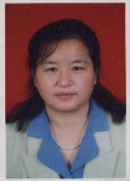Moxibustion Treatment
Author: Dr. Lee
Clicks:
Time: 2010/11/20 16:35:37
Moxibustion treatment of Tibetan medicines has a long history. According to books unearthed in the Dunhuang Grottos, early in the 7th century, moxibustion treatment was popular in curing various diseases.
Tibetan doctors often use mugwort wormwood leaves as materials. They usually select a lucky day in autumn to collect the leaves. After these are dried, they are ground with sticks and rolled into balls, the size depending on the parts for moxibustion. They are usually in the shape of a cone, the bottom wide and top sharp-pointed, which is convenient to burn. If the parts for moxibustion are on big articulations between the limb bones, the ignitable mugwort columns are as big as thumbs; if the parts for moxibustion are on head and limbs, they are smaller and some of them are no larger than the little finger; if the parts for moxibustion are common points, they should be made as big as sheep dung. In addition,they can be made as big as peas for children. They can also be made as mugwort bars.
At present mugwort moxibustion treatment applies to cold diseases, especially declination of stomach fire, dyspepsia, edema, a lump in the abdomen , cold gallbladder diseases, such head and limb diseases as yellow water diseases, anthracnose, scrofula,abnormal fever, mental disorder, epilepsy and bad memory, and convalescence from fever diseases. Any cold diseases that are changed from Bacon disease and swelling disease are proper for moxibustion treatment, which has the best curative effects on yellow water disease and vein diseases.
Tibetan doctors usually have fixed points for moxibustion. These points can be divided into two types: one is the painful points identified by patients; the other is the fixed points all over a person's body. When applying moxibustion, people will place the ignitable mugwort columns on points. Once lit, the patient must sit or lie down quietly and cannot move until reaching the wanted number of zhuang. "One zhuang" refers to the course from the ignition of a mugwort column to the patient's feeling of scorching heat or even pain. The numbers of zhuang are different for different diseases situations.
After the adoption of moxibustion treatment, the patient must stay for a while before walking. In the evening, it is better for the patient to drink little water so as not to affect the moxibustion heat. In addition, moxibustion cannot be applied just after having a meal,or else the curative effect will not be good.
The moxibustion treatment adopted by Mongol doctors is easy to handle and has special characteristics. Steel for flint, firestone and white-mountain thistle were the three appliances for fire moxibustion in Mongolia before the creation of matches. At first it was white-mountain thistles taken from the mountains and plains instead of mugwort worm-wood leaves that were used by Mongol doctors in fire moxibustion. In autumn they would collect white-mountain thistles, process them into wool as a preparation, and ignite by knocking a firestone with steel for a flint.
Medical thread moxibustion treatment adopted by doctors of Zhuang ethnic group has equally satisfactory results. Ramie threads immersed in medicines for long are used in this treatment. After being ignited, the threads directly cauterized some points on the patient's body to induce partial stimulation, transmit the stimulation by arteries and veins,adjust the qi and blood in internal organs to balance, make the internal organs recover normal functions and reach the curative aim. With the further arrangement and improvement by later generations of scientific researchers in Zhuang medicines, this treatment method has become influential and has spread all over the country and even overseas.

